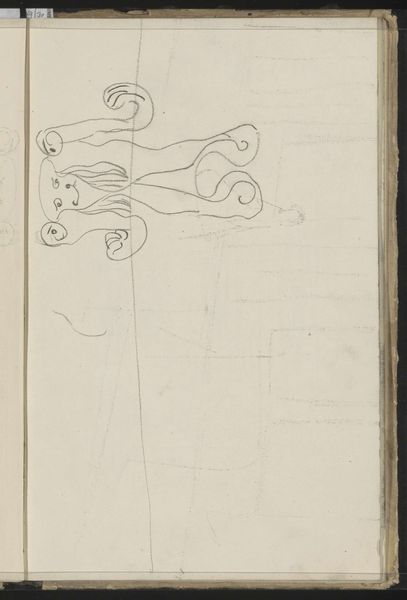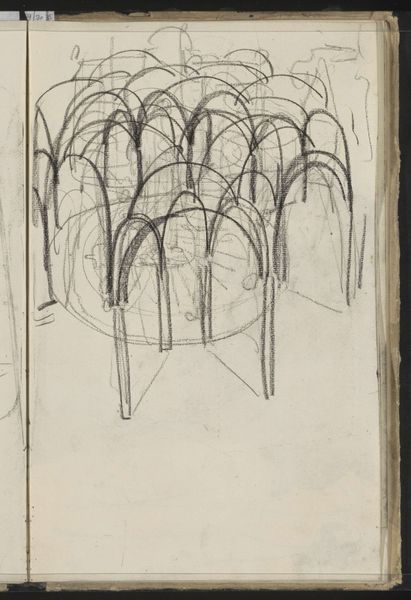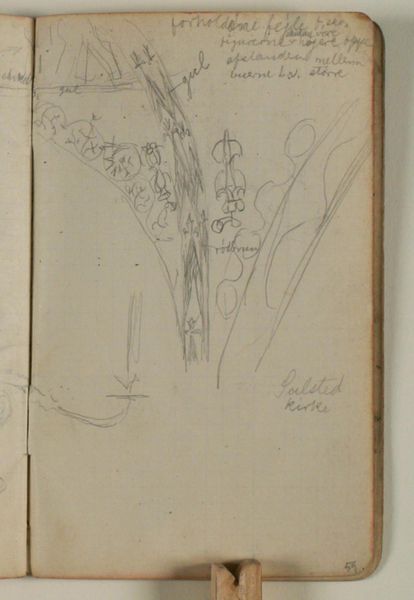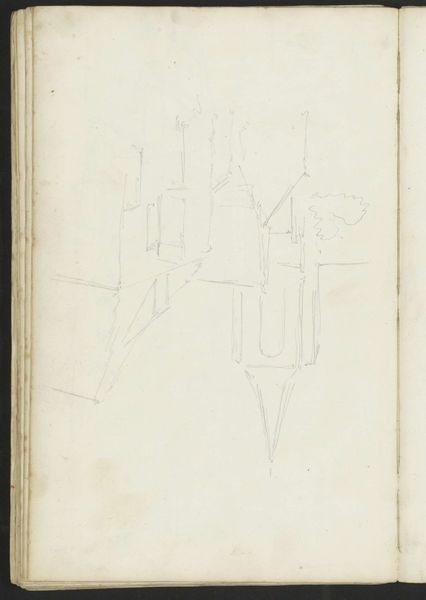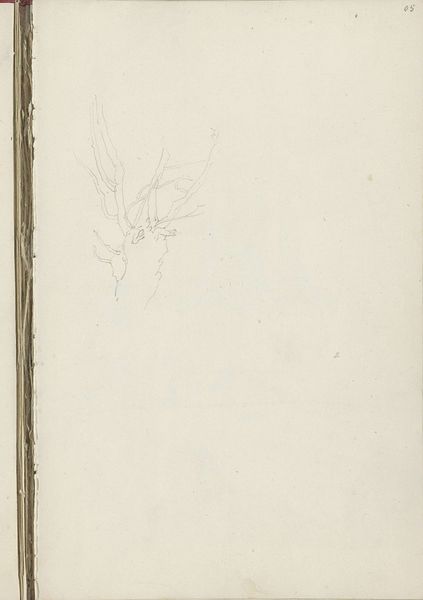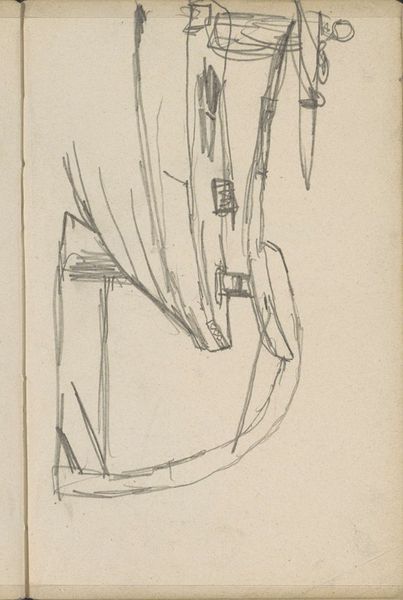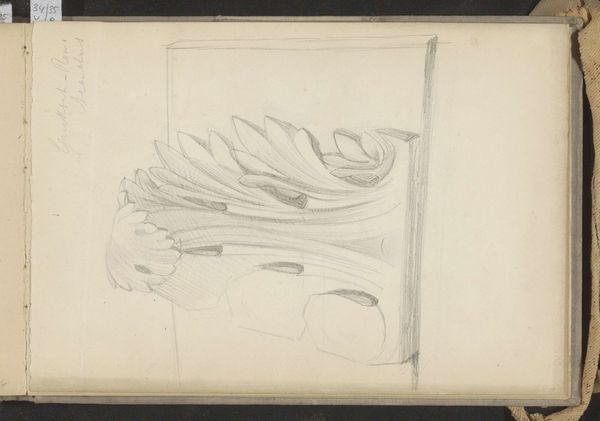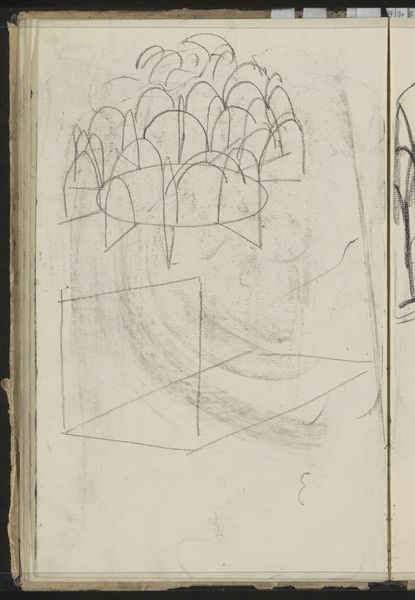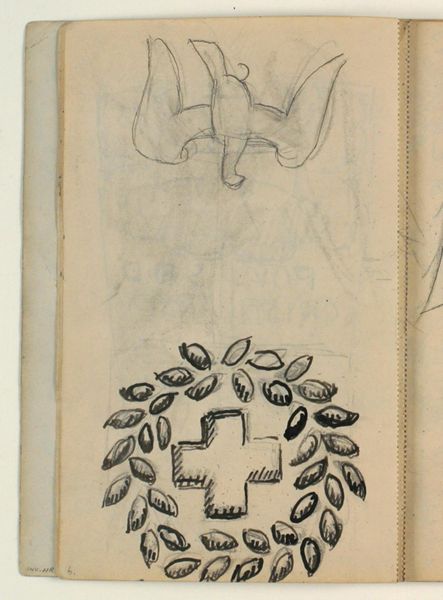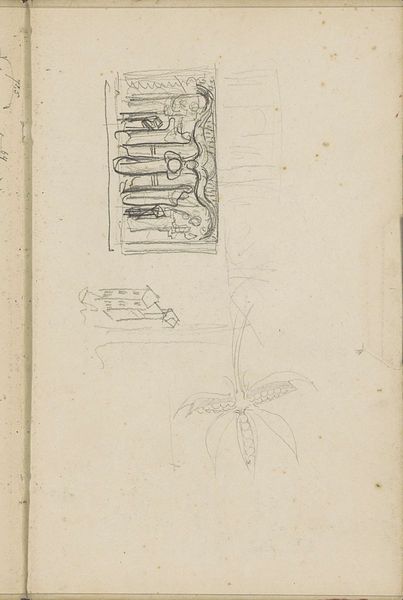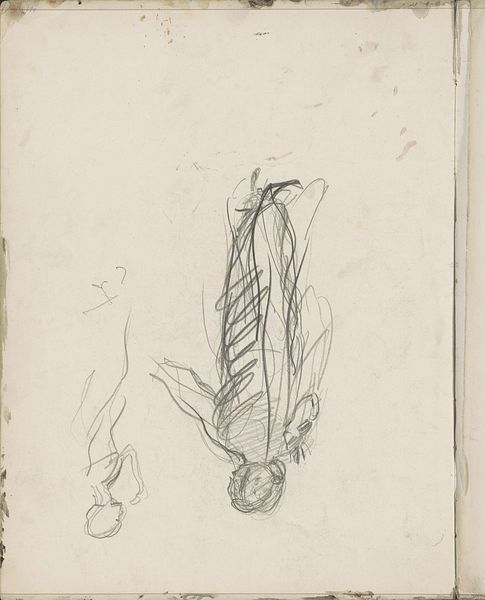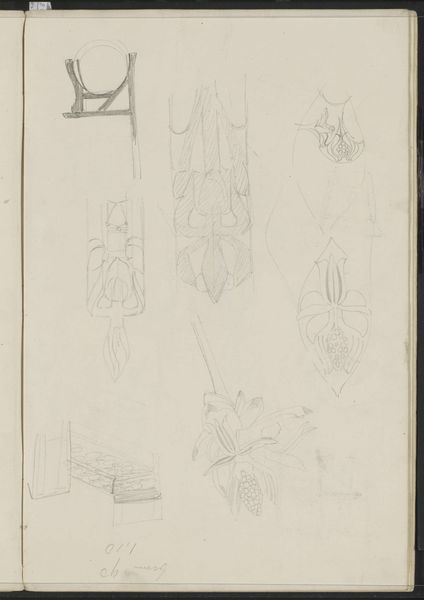
drawing, pencil, architecture
#
drawing
#
geometric
#
pencil
#
modernism
#
architecture
Copyright: Rijks Museum: Open Domain
Editor: This is an architectural study in pencil by Carel Adolph Lion Cachet, dating back to about 1890. I find it so fascinating, but kind of difficult to grasp—it's quite skeletal in its form, a mere suggestion of something grander. What do you see in this piece? Curator: I see more than just a study of architecture; I see a document of its time. Look at the almost utopian style that's hinted at in the design, the curves meeting geometric lines, quite radical and hinting at something. Editor: What would the social context have been at this time? Curator: Around 1890, you’ve got this potent moment of rapid industrialisation coinciding with the rise of modernism in the arts, where traditional aesthetic values were challenged. What kind of person would have sketched an architectural fantasy such as this? It isn’t classical architecture at all. What statements could it be making? Editor: I see, the design possibly mirroring the socio-political turbulence and the burgeoning desire for something…new. It seems a bit incomplete as an idea though, how should we interpret this, do you think? Curator: Exactly. Think of it as a rejection of the established order, expressed through form. The incompleteness is key. This drawing isn’t about a finished project, but about the potential for change, the constant negotiation between tradition and progress that defines Modernism. Editor: So, the beauty isn’t in the building itself but in the thought process behind its very conception. Curator: Precisely. It becomes a statement about pushing boundaries, an embrace of the future and all its potential uncertainties, as opposed to simply building structures. It's a drawing that compels us to question what we build, and why. Editor: That's a helpful reminder about the narratives art can tell. It really opens my eyes to consider the intent of the artwork as a representation of thought. Curator: Indeed. The drawing whispers about the dynamism of architectural Modernism through sociopolitical perspective.
Comments
No comments
Be the first to comment and join the conversation on the ultimate creative platform.
